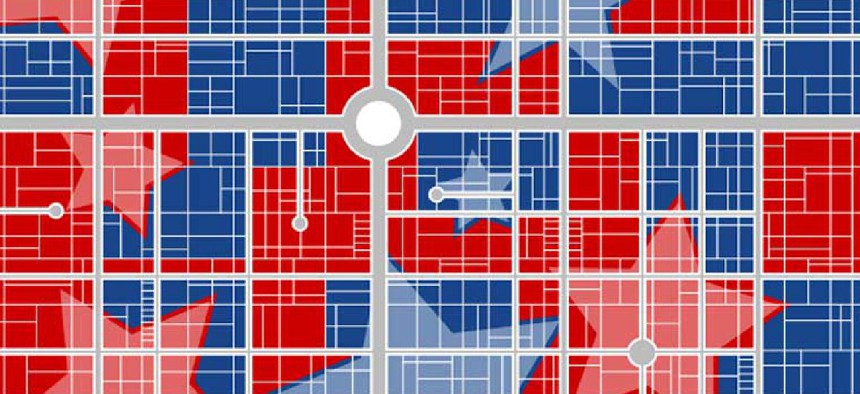States prep census, GIS data for redistricting


Connecting state and local government leaders
Now that the election is over, state and local governments are turning their attention to ways that data and geographic information systems can aid in redistricting efforts.
Now that the election is over, state and local governments are turning their attention to ways that data and geographic information systems can aid in redistricting efforts.
The Redistricting Data Program at the Census Bureau is legally required to give states time to identify the geographic areas for legislative redistricting. “That requires us to deliver high-quality data for those areas in a timely manner,” said James Whitehorn, chief of the bureau’s Redistricting and Voting Rights Data Office.
During “The Census and Your Dataset” session of a Jan. 6 virtual redistricting seminar hosted by the National Conference of State Legislatures, Whitehorn said that Census blocks are the smallest areas the bureau provides data for and that they among the most useful for redistricting. The bureau also provides geographic data on voting districts and state congressional and legislative districts. Census calls the data “geographic products,” which come in several forms, including PDF-based maps, county block maps, tracked maps, voting district maps and shapefiles -- the digital geographic files that are used in GIS.
“They allow you to operate with and manipulate and modify the data that you’re trying to work with through a GIS systems,” Whitehorn said.
A new table that Census will provide this year is “group quarters population by group quarters type.” The bureau defines a group quarters as “a place where people live or stay, in a group living arrangement that is owned or managed by an entity or organization providing housing and/or services for the residents,” such as a nursing home, correctional institution, college or university housing and military barracks.
Additionally, Census will help the states that “must modify their data by reallocating population from group quarters prior to redistricting,” Whitehorn said. “We’re going to provide additional support for what we call the census geocoding service.”
Geocoding is identifying a latitudinal and longitudinal point in space based on an address. The service will add latitude, longitude and census geography down to the census block for individual addresses, he said.
State officials working to geocode more than 10,000 addresses can upload that data through the bureau’s Secure Web Incoming Module, and Census will run the geocoding service in a batch mode, Whitehorn said.
Geocoding is crucial to counties for redistricting, Cathy Darling Allen, county clerk and registrar of voters, Shasta County, Calif., said during the seminar’s “GIS and the Data Handoff” session.
“At the county level, we have the responsibility to maintain not just our voters and geocoding those folks so that we can produce shapefiles that are meaningful, [but] also, we have to maintain boundaries for every other elected jurisdiction within our counties -- so hospital districts, school districts, irrigation districts, mosquito evasion districts,” Allen said.
The county participated in a pilot project with the National States Geographic Information Council (NSGIC), which helped Shasta geocode its voter file.
“GIS helps us get a visual verification that what got in the text of the database is correct,” Allen said.
North Carolina has a statewide voter registration database system that all counties use for elections administration, and it uses a module called Geocode to determine where jurisdictions are and to look at them at street level, according to Veronica Degraffenreid, who was director of elections technology for the state. Today she is special adviser on election modernization at the Pennsylvania Department of State.
“For a county’s geocode assignments to be accurate, each address within a given street segment must geographically lie within each of the assigned jurisdictions or districts,” according to an NSGIC case study. If the geocoding is wrong, it could affect an election and even lead to holding a new one, Degraffenreid said during the seminar.
Overall, though, GIS is a major help to accuracy. “Using GIS technology for elections administration is wonderful,” she said.
NEXT STORY: Making synthetic health records more realistic




